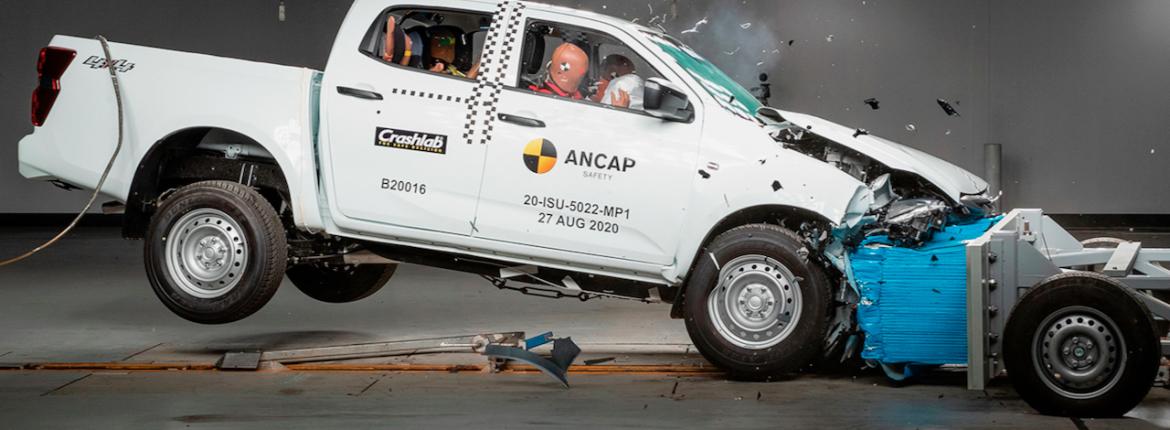Mary Ward will be oblivious to the enormous contribution she made to road safety. The 42 year-old scientist has the dubious distinction of being the first automobile fatality in history – thrown into the air as a passenger from her friend’s steam-powered car west of Dublin in August 1869.

It began a revolution in thinking of a kind – the realisation that these new travelling ‘toys’ can be dangerous. However, it took several decades to get to the high-tech world of physical crash testing and active collision avoidance testing from which we all benefit today.
Most of us know what a crash test dummy – or anthropomorphic test device is; a human-like model used in safety tests to replicate the behaviours of a driver and passengers when a car is hit or crashes from any angle. The information from these tests is undertaken by global vehicle safety authorities to help car manufacturers produce safer cars (and aviation craft and space rockets).
In the 1930s and 1940s human cadavers were the crash test dummies of choice; after them came pigs, baboons and bears. (Pigs were used in the USA to assess steering wheel impacts as they have a similar internal structure to humans). Test dummies, as we would recognise them, were introduced by the United States Air Force in the late 1940s, while the first crash test dummies used specifically for the automotive industry were introduced in 1968. These were average male, large male, and small female ‘vehicular impact personnel’ for frontal crash testing.
Fast forward to 2022 and the Australasian New Car Assessment Program, more commonly referred to as ANCAP SAFETY, is Australasia’s foremost independent vehicle safety authority.
ANCAP safety ratings are published for a range of new passenger, sports utility and light commercial vehicles entering the Australian and New Zealand markets and use a rating system of 0 to 5 stars. Ninety-three percent of new vehicles sold in 2021 were ANCAP safety rated.
ANCAP has published independent safety ratings since 1993. Mark Terrell is the Chief Technical Officer at ANCAP, working hard to promote vehicle safety locally and globally and is keen to dispel some of the myths and misconceptions about the kind of work the organisation undertakes.
“The range of what we rate and test is enormous, from full-scale crash tests to different types of subsystem tests, such as pedestrian impact and whiplash. So many different elements go into determining each ANCAP star rating, and it needs to be cumulative, because you need to have a broad level of safety for a vehicle,” says Mark.
“Our safety ratings are determined based on the poorest-performing area of assessment. So, for example, you can’t have a car that performs well for adult occupant protection but is no good for pedestrian impact, or one that crashes well, but has no active crash avoidance capability. Those combinations won’t score well in our system.”
Evolution is very much at the heart of Mark’s work. As such, the ANCAP crash test dummy family is light years away from the dummies of 50 years ago. Leading the way is THOR (Test device for Human Occupant Restraint). Specifically designed for frontal impacts, the THOR dummy is used in the frontal offset test and is seated in the driver’s position. It was introduced to the ANCAP family in 2020 and is the most advanced dummy of its kind, able to provide 99 channels of data compared to the 39 available from the previous model.
The crash test dummies used by ANCAP have experienced hundreds of crashes first hand. Their role is critical, as each dummy provides information about the level and type of protection provided to them by the vehicle.
“Despite their appearance, the dummies used in our destructive crash tests are highly sophisticated and are fitted with an array of sensors and data acquisition systems to tell us when and where they are ‘hurt’ in a crash. Other members of our dummy family are less sophisticated but equally important, as they help determine how well a vehicle can prevent a crash with a pedestrian, cyclist, motorcyclist, or another vehicle.”
Work is continuous and rigorous. It has to be. Moreover, as new technologies are woven into our cars on an ongoing basis, someone has to make sure innovation is safe. As a result, ANCAP’s work can never really stop.
Over the next five years Mark believes crash avoidance assessment will increase significantly.
“We need to look at driving automation, for example. Everybody has heard of the notion of the driverless car, and while we’re quite a long way from that, both ourselves and Euro NCAP are doing evaluations on ‘assisted driving’ (adaptive cruise and lane centring) which is really interesting.”
From 2023, vehicles will be assessed for their ability to avoid a crash with a motorcycle. The motorcycle (or powered two- wheeler) dummy target will be the newest member of the ANCAP family and will be utilised in use in variety of AEB (automatic emergency braking) and lane support test scenarios. There will also be significant developments in passenger safety relating to side impact crashes in future years, as a new fifth percentile small female frontal crash dummy is nearing readiness for use and will be the newest member of the crash test dummy family.
Reported by Ben Whittacker-Cook for our Spring 2022 issue




